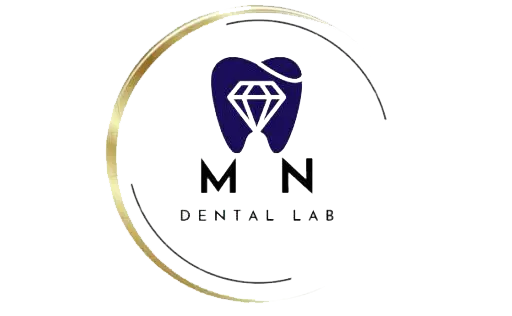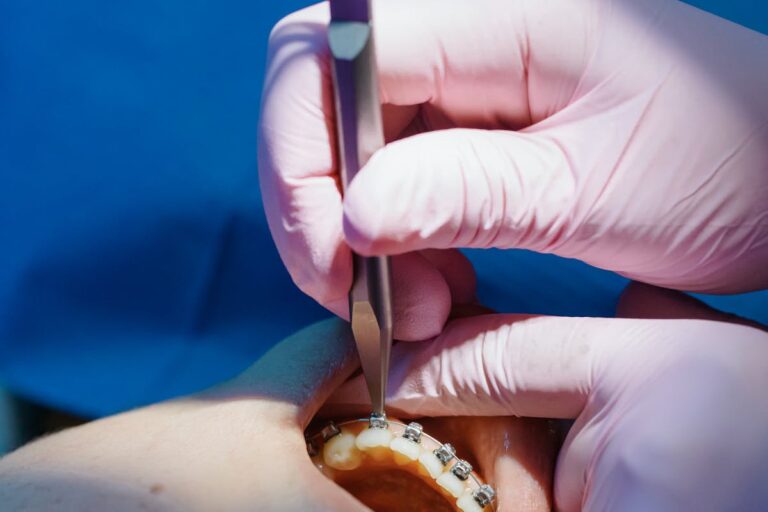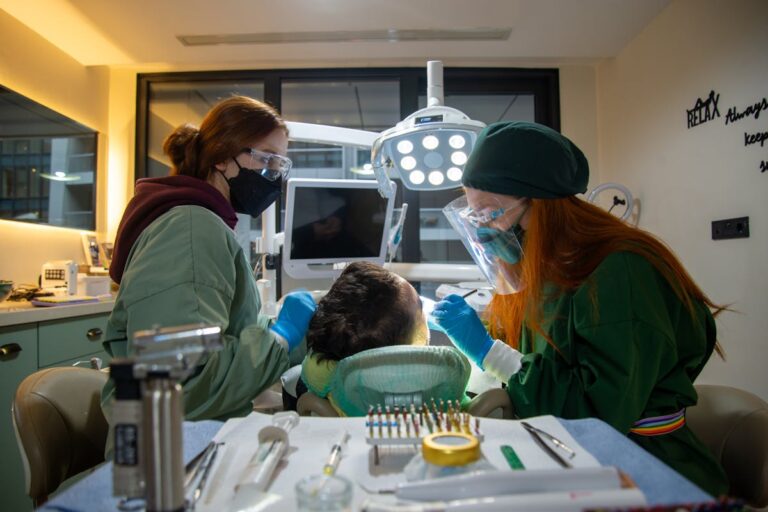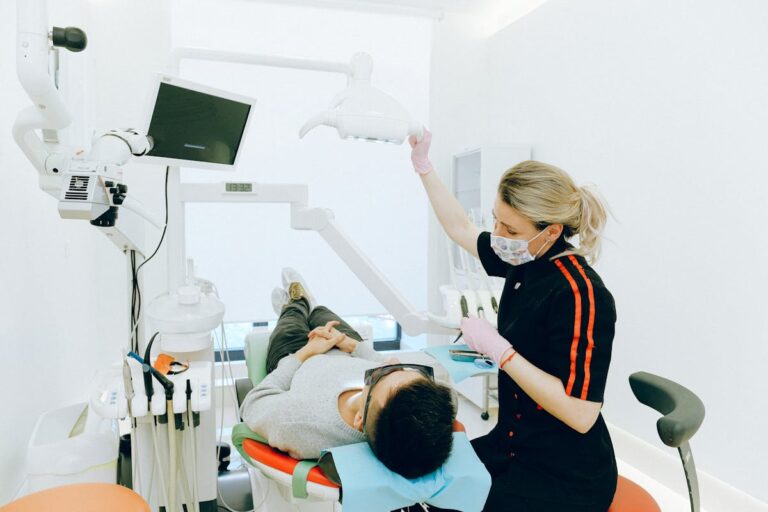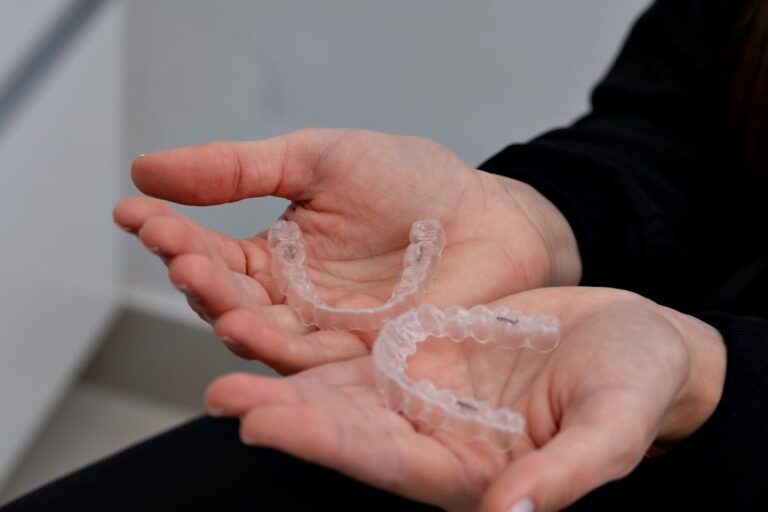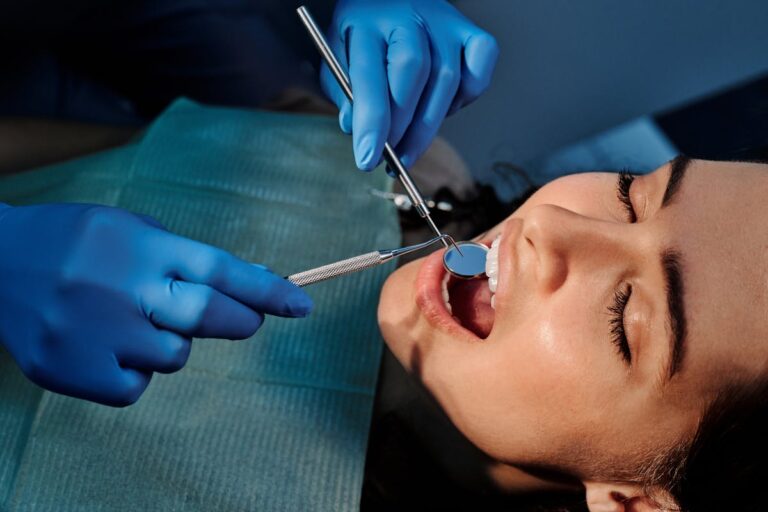In recent years, the field of orthodontics has evolved remarkably, merging art and science to create the blueprint for the perfect smile. With the advent of technologies like clear aligners and 3D imaging, orthodontic practices have transformed, enabling an individualized approach to treatment plans focused on enhancing aesthetics and functionality. Modern orthodontics’ emphasis on preventative measures and patient collaboration, coupled with digital tools’ precision, promises not only a beautiful smile but improved self-esteem and oral health. As we explore this fascinating intersection of art and science, we may find ourselves redefining what it means to achieve that perfect smile.
The Evolution of Orthodontics
While the practice of orthodontics may seem modern, it has roots that date back thousands of years. The ancient Egyptians, for example, used metal wires to straighten their teeth, marking one of the earliest historical milestones in orthodontics. The Roman philosopher, Aulus Cornelius Celsus, further expanded on this concept in the first century AD, documenting the use of finger pressure to correct teeth alignment.
The evolution of orthodontics witnessed significant technological advancements during the 18th century. Pierre Fauchard, often called the father of modern dentistry, invented the ‘Bandeau’, a horseshoe-shaped strip of metal that effectively corrected tooth alignment. In the 19th century, Edward Angle, a pioneer in orthodontics, introduced the concept of malocclusion and categorized it into three types. His work formed the basis for modern orthodontics, leading to the development of the first commercially available braces.
Over the centuries, orthodontics has evolved from rudimentary methods to sophisticated technological applications. The discipline continues to grow, building on the foundations laid by its historical milestones and fueled by continuous technological advancements. The evolution of orthodontics is a reflection of the constant pursuit of dental perfection and the enhancement of oral health.
Modern Orthodontic Techniques
Consistently advancing with the pace of technology, modern orthodontic techniques have revolutionized dental care in unprecedented ways. These techniques, including clear aligners and digital orthodontics, have reshaped orthodontic procedures to provide patient-centered care with an emphasis on aesthetic considerations.
Clear aligners offer a nearly invisible solution for teeth alignment, providing an attractive alternative to traditional braces. Digital orthodontics, encompassing 3D imaging and computer-aided design, has enhanced the precision of diagnosis and treatment planning. Orthodontic practices, such as those at Okuda Orthodontics, further guarantee customized treatments tailored to individual patient needs and aesthetic desires, helping patients achieve their dream smiles.
The concept of preventive orthodontics plays a pivotal role in modern techniques. It centers around early intervention, rectifying orthodontic issues before they develop into more complex problems. This approach, coupled with regular dental check-ups, reduces the need for invasive treatments later on, thereby promoting overall oral health.
Orthodontic care has metamorphosed from a reactive to a preventive model, with a strong focus on patient satisfaction. The advent of modern orthodontic techniques has brought about a shift in patient experiences, with more efficient, effective, and aesthetically pleasing treatment options. These advancements symbolize the future of dental care, where technology and patient comfort intertwine.
Understanding Invisalign Treatment
As we explore modern orthodontic approaches, a key component that merits attention is the Invisalign treatment. This treatment process, characterized by its innovative use of custom-made, transparent aligners, signifies a significant departure from traditional metal braces. We will further dissect the specific process of Invisalign treatment, and examine the unique benefits it offers to patients.
Invisalign Treatment Process
Steering through the world of modern orthodontics, one may stumble upon the increasingly popular Invisalign treatment. This cutting-edge method utilizes custom-made Invisalign aligners, crafted from digital impressions of your teeth for a perfect fit. The aligners are virtually invisible and can be removed when eating or brushing, offering unprecedented comfort and convenience.
The Invisalign treatment duration varies depending on the complexity of the case but typically spans around 12 to 18 months. Patient compliance, however, is critical in achieving ideal results. The aligners should be worn for 20-22 hours daily, adhering to a prescribed wear schedule to guarantee the teeth move to their designated positions.
Cost comparisons with traditional braces often reveal Invisalign as a more economical choice in the long term, considering its benefits. Orthodontic consultations are essential to determine if Invisalign is the best solution to address your dental concerns.
Innovative technologies like smile tracking and virtual monitoring further enhance the treatment process. They provide real-time progress updates, allowing the orthodontist to make necessary adjustments, making sure you’re on the right path to achieving the perfect smile. The Invisalign treatment process, thus, is a harmonious blend of art and science, offering a modern pathway to orthodontic excellence.
Benefits of Invisalign
Embracing the Invisalign treatment brings along a host of benefits that transcend the aesthetic appeal of a straight smile. Perhaps the most noticeable of these advantages is the Invisalign comfort. Unlike traditional braces, this modern orthodontic solution is free of wires and brackets, which can cause discomfort and mouth sores. The clear, plastic aligners used in the treatment are personalized to each patient’s mouth, ensuring a snug, comfortable fit.
The Invisalign treatment also offers a considerable level of convenience. The aligners are removable, allowing patients to continue enjoying their favorite foods and maintain their regular oral hygiene routines without hindrance. This flexibility greatly improves the treatment experience and outcomes for patients.
While the Invisalign cost may initially appear higher than that of traditional braces, it is essential to contemplate the thorough value of the treatment. The cost encompasses the entire treatment plan, including all necessary aligners and adjustments. Additionally, the convenience, comfort, and aesthetic appeal of Invisalign often justify the price for patients seeking an effective, discreet solution for improving their smile.
The Science Behind Braces
In the domain of orthodontics, braces represent a significant technological advancement that merges both scientific and biological principles. To fully appreciate their efficacy, it is essential to grasp the fundamentals of orthodontic principles, the mechanical design of braces, and the biological responses they induce. The ensuing discussion will concentrate on these three aspects, providing a thorough understanding of the science that underpins braces.
Understanding Orthodontic Principles
The world of orthodontics is a fascinating blend of art and science, where principles of physics and biology work in harmony to create beautiful, functional smiles. At its core, orthodontics is governed by certain principles that dictate treatment plans and predict outcomes.
Understanding orthodontic principles necessitates a grasp of some orthodontic terminology.
- Malocclusion: It’s a term used for teeth that don’t fit together correctly.
- Archwire: This is the metal wire that guides the movement of teeth in orthodontic treatment.
- Bracket: It’s a small attachment that is bonded directly onto the tooth.
- Elastics: These are small rubber bands that exert pressure on the teeth and jaw to guide their alignment.
Each patient presents a unique scenario, and consequently, treatment duration varies. Factors such as the complexity of the case, patient compliance, and biological response to treatment influence the timeline. In understanding these principles, we can appreciate the layers of complexity that lie beneath each perfect smile. Ultimately, the goal of orthodontics is more than aesthetics; it is to create a healthy, functional, and harmonious oral environment.
Braces: Mechanism and Design
Having established a foundation in orthodontic principles and terminology, we now turn our attention to the practical application of these principles in one of the most common orthodontic treatments: braces. The design and mechanism of braces are a crucial part of the orthodontic treatment process, and are subject to extensive scientific study and innovation.
The materials used in braces have evolved considerably over time, with the aim of enhancing both the effectiveness and comfort of this treatment. Initially, braces materials were mainly made of metal. However, in recent times, materials such as ceramic and clear plastic have been introduced. These new materials not only provide a more aesthetic appeal, but also offer enhanced braces comfort, reducing the discomfort traditionally associated with braces.
The design and mechanism of braces are based on the principle of applying consistent pressure to the teeth. Brackets are bonded to the teeth and connected by an archwire. Through careful adjustment of this wire, orthodontists can guide the teeth into their ideal alignment, achieving the desired aesthetic and functional outcome. This mechanism is the essence of orthodontics, facilitating the transformation of smiles across the globe.
The Biological Response
Every orthodontic treatment, including braces, relies on a complex biological response to achieve the desired teeth alignment. This response is a multifaceted process involving cellular response, tissue remodeling, and bone adaptation, all governed by intricate biological mechanisms.
- Cellular response: When orthodontic forces are applied, cells within the periodontal ligament and surrounding bone react, initiating the process of remodeling. This cellular response is key to the movement of teeth.
- Tissue remodeling: The soft tissue around the teeth is dynamic, constantly adapting to changes. Orthodontic forces stimulate tissue remodeling, which allows teeth to move within the jawbone.
- Bone adaptation: Orthodontic treatments rely on the bone’s ability to adapt. As pressure is applied, bone material is resorbed on one side of the tooth and deposited on the other, facilitating movement.
- Growth patterns and Periodontal health: The success of orthodontic treatment also depends on individual growth patterns and periodontal health. These factors can considerably influence the biological response and ultimate outcome.
Understanding these biological responses allows orthodontists to design effective treatment plans, ensuring patients achieve their perfect smile in a healthy, sustainable manner.
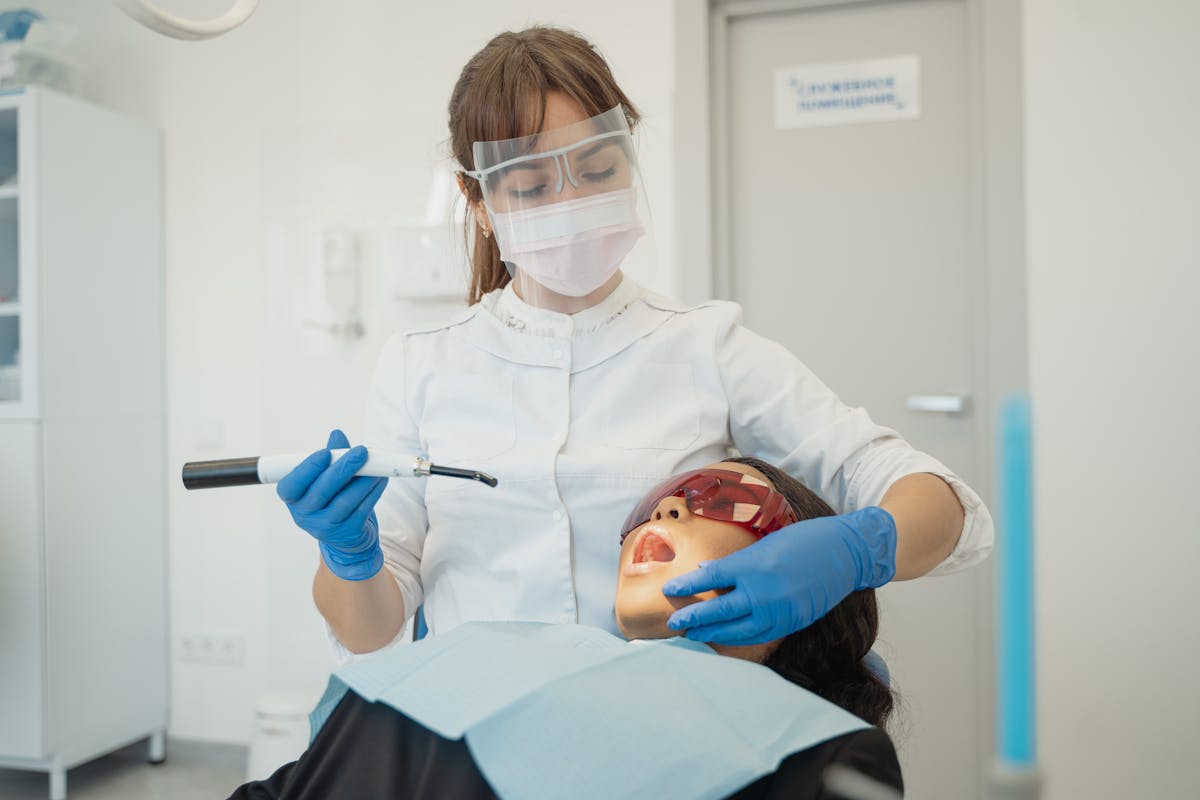
Role of 3D Imaging Technology
With its roots deeply ingrained in modern orthodontics, 3D imaging technology plays a pivotal role in enhancing patient diagnosis and treatment planning. This orthodontic innovation has revolutionized digital diagnostics, providing a thorough view of the patient’s oral structure. The enhanced visualization offered by 3D imaging facilitates precision planning, allowing orthodontists to develop a virtual treatment plan tailored to the patient’s specific needs.
The power of 3D imaging technology is not limited to diagnostics and planning. It extends into patient collaboration, enabling individuals to visualize the potential outcome of their treatment through simulations. This interactive approach fosters a better understanding of the treatment process, improving patient satisfaction and compliance.
One of the most remarkable aspects of 3D imaging technology in orthodontics is its role in outcome prediction. By simulating the expected results of treatment, orthodontists can make proactive adjustments to guarantee ideal outcomes. This predictive power, combined with the detailed information provided by 3D imaging, has the potential to greatly enhance the quality of patient care, making it a cornerstone of modern orthodontic practice.
Orthodontics and Facial Aesthetics
Undeniably, orthodontics plays a significant role in enhancing facial aesthetics. The goal of orthodontic treatment is not only to align the teeth but also to harmonize the facial features, achieving an aesthetic balance. Facial symmetry, a vital aspect of beauty, is often the result of well-executed orthodontic procedures.
To highlight the importance of orthodontics in facial aesthetics, consider the following:
- Creating Balance: Orthodontic treatment can correct an overbite or underbite, improving facial symmetry and balance.
- Jaw Alignment: Orthodontics can address jaw misalignments, leading to a more proportionate and aesthetically pleasing facial profile.
- Spacing and Crowding: Properly aligned teeth can affect the positioning of the lips and cheeks, contributing to overall facial harmony.
- Psychological Impact: Improved facial aesthetics can lead to increased self-esteem and confidence, demonstrating the profound impact of orthodontics on a patient’s quality of life.
Orthodontic Treatment Planning
Initiating an orthodontic treatment requires meticulous planning, tailored to address the unique needs of each patient. The process begins with a thorough examination, encompassing the assessment of oral health, facial aesthetics, and dental structures. This data forms the foundation of our treatment goals, which are specifically designed to rectify individual issues while promoting overall dental health.
Central to the orthodontic treatment planning is patient collaboration. By actively involving the patient in the decision-making process, we guarantee that the treatment plan not only addresses their clinical needs but also aligns with their personal preferences and lifestyle. This collaborative approach builds a sense of ownership and responsibility, essential for successful treatment outcomes.
The treatment goals encompass both functional and aesthetic aspects. While the primary aim is to improve oral function, aesthetics are also taken into consideration. The perfect smile is an amalgamation of ideal bite function and symmetrical alignment of teeth.
In modern orthodontics, technology plays a vital role in treatment planning. Advanced imaging techniques allow for precise diagnosis and predictive modelling, enabling us to layout a thorough, step-by-step treatment plan that is both effective and efficient.
Maintaining Oral Health Post-Treatment
Although orthodontic treatment is a vital step towards achieving dental health and aesthetics, maintaining oral health post-treatment is equally important. This involves a continuous commitment to oral hygiene and post-treatment care to guarantee the longevity of the treatment results and the overall health of your mouth.
- Regular Dental Check-ups: Regular visits to the dentist are essential to monitor the stability of the treatment results and to detect and address any possible issues early.
- Oral Hygiene Practices: Good oral hygiene habits, such as regular brushing and flossing, are necessary to prevent plaque build-up and gum diseases. Special care should be taken around orthodontic appliances.
- Use of Retainers: Retainers are generally prescribed post treatment to prevent teeth from moving back to their original positions. Proper use and care of retainers are vital.
- Healthy Diet: A diet low in sugar and high in fruits and vegetables can help prevent cavities and promote overall oral health.
Case Studies: Smile Transformations
Delving into the domain of smile transformations, we find numerous case studies that clearly illustrate the power of modern orthodontics. These narratives, rich with patient experiences and marked by detailed treatment timelines, allow us to understand the intricate process and the profound impact of orthodontic interventions.
One case resonates particularly well: A young woman, burdened with a severe underbite, experienced a dramatic smile transformation over a two-year treatment timeline. Her journey involved braces and surgical orthodontics, resulting in an aesthetically pleasing and functionally sound smile. The transformation not only boosted her self-esteem but also resolved the biting issues she previously experienced.
Another case study involves a middle-aged man with severe crowding of teeth. With a treatment timeline of 18 months using clear aligners, his smile was completely transformed. The man reported a significant improvement in his self-confidence and overall quality of life.
These cases underline the fact that modern orthodontics is not just about cosmetic enhancements. The science and art of orthodontics work in synergy to improve both function and appearance, thereby positively impacting patients’ lives. These smile transformations exemplify the power and potential of modern orthodontics.
Frequently Asked Questions
What Does the Orthodontic Treatment Process Typically Cost?
The cost of orthodontic treatment varies widely, typically ranging from $3,000 to $10,000, influenced by factors such as complexity of the case, duration, and region. Treatment financing options and insurance coverage can greatly affect these costs.
Are There Any Side Effects or Risks Associated With Orthodontic Procedures?
Orthodontic procedures, while effective for achieving dental alignment, can present certain risks such as tooth sensitivity and gum irritation. However, these side effects are usually temporary and can be managed with proper dental care and medication.
Can Adults Undergo Orthodontic Treatment, or Is It Primarily for Children and Teenagers?
Yes, adults can indeed undergo orthodontic treatment. Modern adult orthodontics offer numerous treatment benefits, including improved oral health and enhanced aesthetics, making it a viable option not just for children and teenagers, but for individuals of all ages.
How Long Does It Typically Take to See Results From Orthodontic Treatment?
Orthodontic treatment duration varies considerably depending on individual cases. However, visible changes typically emerge within a few months. For extensive treatment, it often spans between one to three years, with gradual improvements observed throughout.
Are There Alternative Treatments to Braces and Invisalign for Teeth Alignment?
Yes, there are alternative treatments to braces and Invisalign for teeth alignment. These include clear aligners, removable dental appliances, and retainers, which can effectively adjust tooth position based on individual patient needs and preferences.
